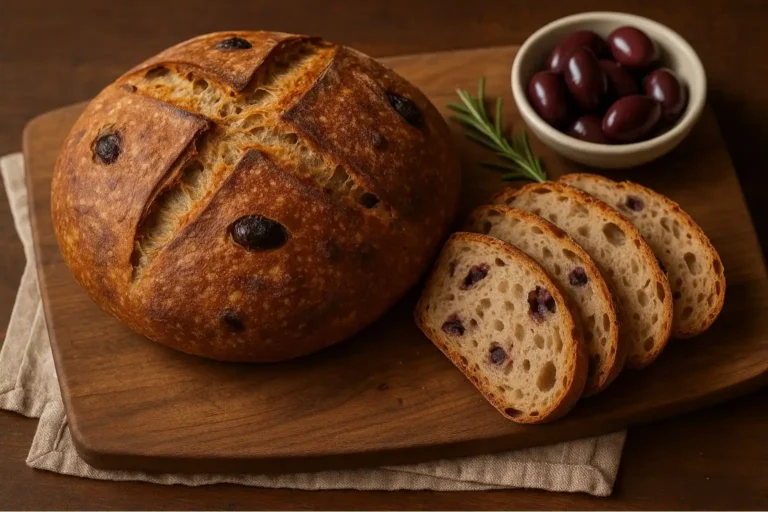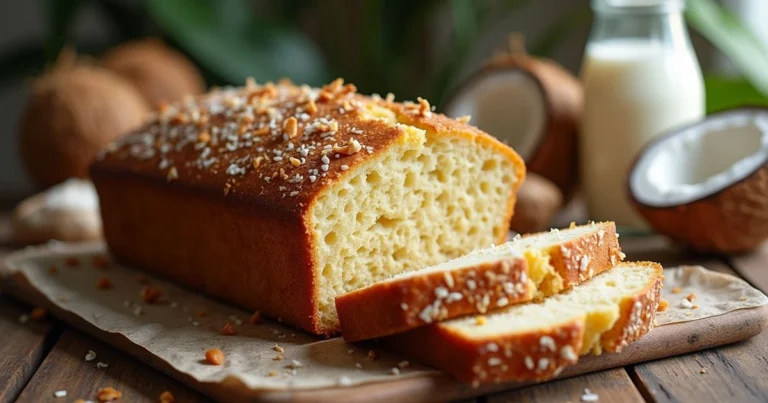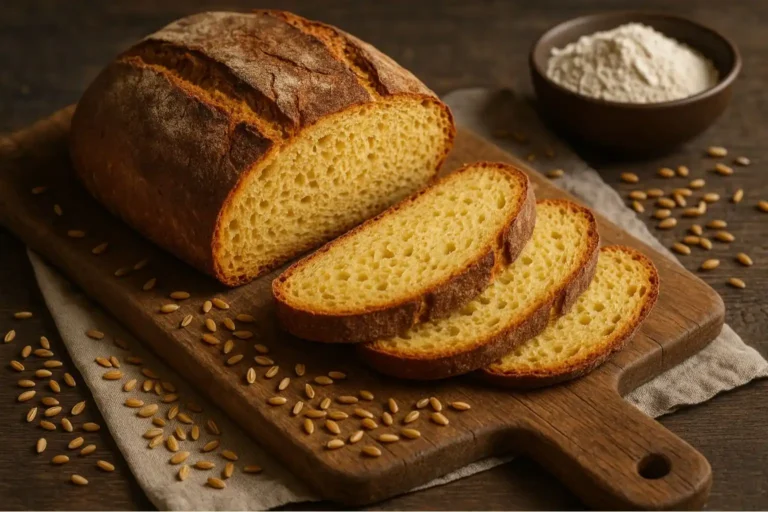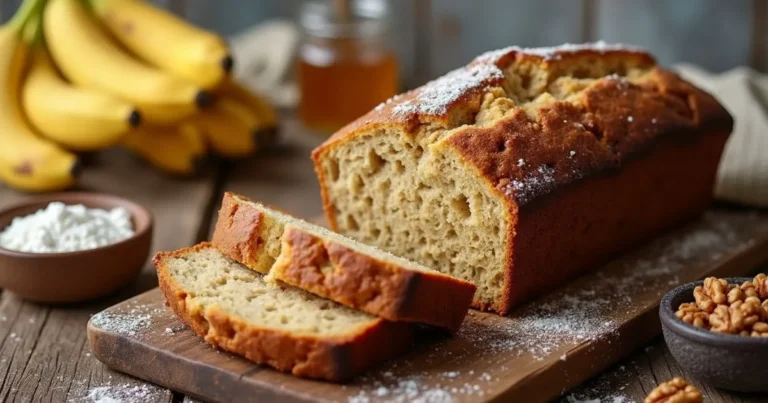Sourdough Bread: Discover 5 Health Benefits
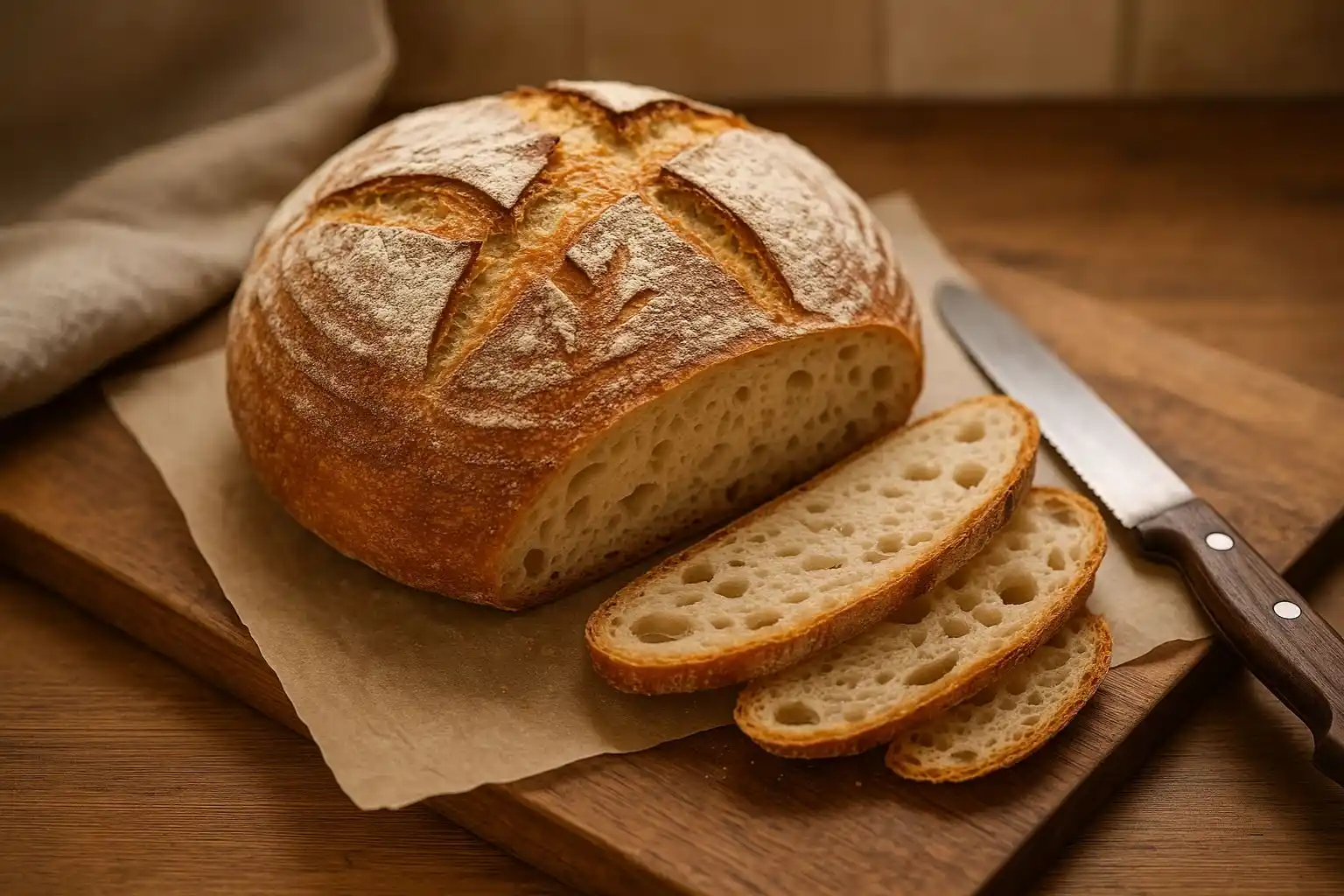
Introduction to Sourdough Bread
That amazing smell wafting from your favorite bakery? The tangy taste you just can’t get enough of? Chances are, it’s sourdough bread! This isn’t a new fad. People have been baking sourdough bread for thousands of years – think ancient Egypt! Back then, bakers didn’t have little packets of yeast. They made magic happen using just flour, water, and the wild yeasts floating in the air around us. That’s the core difference: sourdough bread relies on natural fermentation, not the fast-acting commercial yeast used in most regular breads. It’s a slower, gentler process that creates amazing flavor and, as science shows us, some pretty unbeatable health perks. Today, we’re diving deep into why this traditional loaf is such a superstar for your well-being.
Table of Contents
The Science Behind Sourdough Fermentation
So, how does a simple mix of flour and water turn into that bubbly, flavorful starter? It’s all about the tiny helpers: wild yeast and friendly bacteria.
How Wild Yeast and Lactic Acid Bacteria Work
Imagine your sourdough starter as a tiny, busy city! The wild yeast (our tiny bakers) and lactic acid bacteria (the helpful neighbors) move in and start munching on the flour. Here’s what they do:
- Breaking Things Down: The yeast eats the sugars in the flour, creating bubbles of gas (that’s what makes your bread rise!). At the same time, the lactic acid bacteria get to work breaking down the starches and complex proteins. Think of it like pre-digestion happening right in the bowl!
- Creating Flavor & Protection: As the bacteria work, they produce lactic acid (and sometimes acetic acid). This lactic acid gives sourdough bread its special tangy taste. But it’s not just about flavor! This acid also acts like a natural guard, helping to keep bad mold away and making your bread stay fresh longer without weird chemicals. Cool, right?
Phytic Acid Reduction: Unlocking Nutrients
Flour, especially whole grain flour, contains something called phytic acid. It’s often called an “anti-nutrient” because it likes to grab onto important minerals like iron, zinc, and magnesium, making it harder for your body to absorb them. This happens in all breads. But here’s where sourdough fermentation shines!
- The long, slow fermentation time in sourdough bread allows the lactic acid bacteria and enzymes produced during fermentation to break down a lot of this phytic acid.
- When phytic acid is reduced, those locked-up minerals are set free! Your body can then grab hold of them much more easily when you eat the bread.
- Compared to regular bread made with commercial yeast (which ferments much faster), sourdough bread gives you a bigger boost of these essential nutrients. It’s like unlocking a treasure chest of goodness hidden inside the grain!
5 Unbeatable Health Benefits of Sourdough Bread
Okay, the science is neat, but what does it really mean for you? Here are five fantastic reasons why choosing sourdough bread is a win for your health:
Benefit 1: Enhanced Digestibility & Gut Health
Does regular bread sometimes leave you feeling bloated or uncomfortable? You’re not alone. Sourdough bread is often much easier on the tummy. Here’s why:
- Gluten Gets Gentler: The long fermentation process in sourdough allows the lactic acid bacteria and enzymes to start breaking down the gluten proteins before you even take a bite. It’s like the gluten gets partially pre-digested! While sourdough bread is not gluten-free, this breakdown makes it much easier for many people to digest. If you find regular bread bothersome, sourdough might be a game-changer.
- Food for Your Friendly Bacteria: Remember those lactic acid bacteria? They don’t just hang out in the starter; they also leave behind good stuff in the bread. Sourdough bread acts as a prebiotic. This means it provides food for the good bacteria already living in your gut. Feeding these friendly bugs helps keep your whole digestive system happy and balanced. A happy gut often means less bloating and better overall digestion!
Benefit 2: Balanced Blood Sugar Response
Watching your blood sugar? Sourdough bread is a smarter choice than most other breads.
- Lower Glycemic Index (GI): The Glycemic Index (GI) measures how quickly a food makes your blood sugar rise. Foods with a high GI cause quick spikes. Foods with a low GI cause a slower, gentler rise. Thanks to its fermentation process and the organic acids produced, sourdough bread has a significantly lower GI than breads made with commercial yeast – even if they use the same type of flour!
- Better Insulin Response: Studies show that eating sourdough bread leads to a smaller spike in blood sugar and a lower insulin response compared to regular bread. Insulin is the hormone that helps your body use sugar for energy. A more balanced response is better for your energy levels and overall metabolic health over time. This makes sourdough a better option for everyone, especially those managing blood sugar concerns.
Benefit 3: Increased Nutrient Bioavailability
We touched on this with phytic acid, but it deserves its own spotlight! Sourdough fermentation doesn’t just make bread; it makes nutrients easier for you to grab.
- Mineral Power-Up: By breaking down phytic acid, sourdough bread unlocks important minerals trapped in the grain. This means you get more usable:
- Iron: Essential for carrying oxygen in your blood.
- Zinc: Important for your immune system and healing.
- Magnesium: Involved in hundreds of body processes, including muscle and nerve function.
- Vitamin Boost: The fermentation process also helps increase the levels and availability of certain B vitamins, especially folate (B9). B vitamins are crucial for turning food into energy and keeping your brain sharp. Sourdough bread gives you more nutritional bang for your bite!
Benefit 4: Natural Preservation & Clean Ingredients
Real sourdough bread is made the old-fashioned way, and that means simpler, cleaner ingredients.
- Nature’s Preservative: The acetic acid produced during fermentation (which gives some sourdoughs a sharper tang) is a natural mold inhibitor. This means authentic sourdough bread naturally stays fresher longer without needing added preservatives or chemicals. You might notice it doesn’t get moldy as quickly as supermarket bread!
- What You See is What You Get: True traditional sourdough needs only four basic ingredients: flour, water, salt, and the wild culture (starter). There’s no need for added sugars, dough conditioners, commercial yeast, or preservatives often found in mass-produced breads. Choosing real sourdough bread means choosing a loaf made with simple, wholesome ingredients you can recognize.
Benefit 5: Antioxidant and Anti-Inflammatory Properties
The magic of fermentation goes even deeper, creating compounds that help protect your body.
- Fighting Free Radicals: The fermentation process increases the levels of certain antioxidants in sourdough bread. Antioxidants help fight “free radicals” – unstable molecules that can damage your cells over time. Think of them as little shields protecting your body!
- Soothing Inflammation: Some studies suggest that the unique compounds formed during sourdough fermentation, like certain bioactive peptides, may have anti-inflammatory effects. Chronic inflammation is linked to many health issues. Including more naturally fermented foods like sourdough bread in your diet could be one tasty way to help support your body’s natural defenses against inflammation and related chronic diseases.
Choosing the Healthiest Sourdough Bread
Not all loaves labeled “sourdough” are created equal! Here’s how to find the real deal for maximum health benefits.
Identifying Authentic vs. “Sourdough-Style” Products
Many grocery store breads are “sourdough-style” – they add flavorings but skip the real, slow fermentation. Watch out for these clues:
- Label Red Flags:
- “Made with sourdough” but also lists “yeast”: True sourdough relies only on its wild starter for rising. Commercial yeast speeds things up but skips the health benefits.
- Added vinegar or acetic acid: This mimics the tangy taste artificially without real fermentation.
- Preservatives, dough conditioners, sugar: Real sourdough doesn’t need these.
- Very short ingredient lists: Look for flour (ideally whole grain), water, salt, starter. That’s it!
- Fermentation Time is Key: Ask your baker or check the label (if possible). Authentic sourdough bread needs a long fermentation time – ideally 24 hours or more. This slow process is crucial for developing flavor, breaking down gluten and phytic acid, and creating those health perks. Fast “sourdough” isn’t the real health hero.
Whole Grain and Sprouted Options
Take your sourdough bread to the next level of nutrition:
- Go Whole Grain: Look for loaves made with whole wheat, rye, spelt, or other whole grain flours. These pack way more fiber, vitamins, and minerals than breads made with just white flour. The fiber also works with the fermentation benefits for even better blood sugar control and gut health. A whole wheat sourdough bread is a nutritional powerhouse!
- Sprouted Grain Goodness: Some bakers use sprouted grains for their sourdough. Sprouting grains before milling them into flour increases nutrients and makes them even easier to digest. Sprouted grain sourdough bread is an excellent choice if you can find it. It combines the power of sprouting with the benefits of fermentation.
Addressing Common Sourdough Myths
Let’s clear up some confusion swirling around this delicious bread.
“Is Sourdough Gluten-Free?”
This is a big one! No, sourdough bread is not gluten-free. It is made from wheat, rye, or barley flour, all of which contain gluten.
- What’s True: The long fermentation process does break down a significant portion of the gluten proteins. For many people with mild gluten sensitivity (not celiac disease), sourdough bread is often much easier to digest and doesn’t cause the same problems as regular bread.
- Important: People with celiac disease or a diagnosed wheat allergy must avoid sourdough bread made from gluten-containing grains. It still contains gluten, even if it’s partially broken down. Never assume sourdough is safe if you require a strict gluten-free diet.
Calorie Misconceptions
Is sourdough bread a low-calorie diet food? Not exactly.
- Calorie Comparison: A slice of sourdough bread generally has a similar number of calories to a slice of regular whole wheat bread. The difference isn’t in the calorie count itself.
- The Real Difference: The magic of sourdough lies in how your body processes those calories and the extra nutrients you get:
- Better blood sugar control means more stable energy, not a crash.
- More available nutrients mean you’re getting more vitamins and minerals per calorie.
- Better digestibility means your body can use the energy more efficiently.
- Higher satisfaction (due to flavor and fiber) might help you feel full longer.
So, while the calories might be similar, the quality and impact of those calories from sourdough bread are often much better for your body.
Conclusion: Embrace the Sourdough Advantage
Wow, who knew a simple loaf of bread could do so much? Let’s quickly recap those 5 unbeatable health benefits of choosing sourdough bread:
- Gentler on Your Tummy: Easier digestion and happy gut bacteria thanks to fermentation.
- Steady Energy: Better blood sugar control with a lower glycemic index.
- More Nutrients for You: Unlocked minerals and boosted B vitamins.
- Clean & Simple: Naturally preserved with minimal, wholesome ingredients.
- Body Protection: Antioxidants and potential anti-inflammatory effects.
One Final Tip: To make your sourdough bread snack or meal even more balanced and satisfying, pair it with healthy fats and proteins! Think avocado slices, a smear of nut butter, some cheese, eggs, or smoked salmon. This combo helps slow digestion further and keeps you fueled for longer.
Ready to experience the tangy, wholesome goodness? Don’t just read about it – taste the difference! Seek out a genuine loaf from a local artisan bakery (ask about their fermentation time!). Or, better yet, feel the magic yourself – why not try baking your own sourdough bread? It’s a rewarding adventure. Grab a starter kit or ask a baking friend for some of theirs. Share your first sourdough creation with us in the comments below – we’d love to hear about your baking journey! Happy (and healthy) baking! 🥖✨

